The Great Battle of Kursk: Operation Rumyantsev
On the part of the Wehrmacht, the 4 I tank army, the Kempf army group and the 4 air fleet participated in the battle: about 300 thousand people, more than 3 thousand guns and mortars, about 600 tanks and over 1 thousand aircraft (according to Soviet data); 200 thousand people and 210 tanks (according to German data). The Wehrmacht had 15 infantry divisions and 4 tank divisions in the operational reserve (6-I, 7-I, 11-I and 19-I) in this direction. Already in the course of the battle, the German command transferred from the Donbass and Orel directions, the SS Viking and 17 tank divisions, the Great Germany, Reich, Dead Head and SSN armored divisions. The Kharkov grouping was also reinforced by three infantry divisions.
It is officially considered that the start of the offensive operation of the Soviet troops on the South face of the Kursk Bulb began on August 3, but this is not entirely true. On July 16, the German command, fearing that the troops stationed in the Prokhorovka area would fall prey to the flank attacks of the Red Army, ordered the withdrawal to the initial positions under the cover of strong rear guards. The offensive of the Western and Bryansk fronts, which began on July 12, and July 15 - the Central Front on the Oryol arc also played its role. Troops of the Voronezh Front went on the offensive on July 16. On July 17, units of the 5 Guards Army and the 5 Guards Tank Armies were able to press the German rear guards and advance 5 – 6 kilometers. The 18 – 19 July was joined by the 6-I Guards Army and the 1-I Tank Army. Tank formations advanced 2 – 3 km.
18 July was to join the battle and the Steppe Front under the command of Ivan Konev, but until the end of 19 July he was engaged in the regrouping of forces. Only on July 20, the troops of the Steppe Front managed to advance 5 – 7 km. On July 22, units of the Voronezh and Steppe Fronts went over to the general offensive and by the end of the next day, knocking down German barriers, generally took up positions that were held by Soviet troops before the start of Operation Citadel on July XNX. However, the further advance of the Soviet troops was stopped by German forces, which relied on the former defensive lines and received reinforcements. The rate offered to continue the offensive immediately, but for its success it was necessary to regroup the forces and replenish the units with personnel and equipment. After listening to the arguments of the front commanders, the Supreme Command postponed the deadline for further offensive until the beginning of August.
Artillery fighters brigade (general type) pursue the retreating enemy (Photo RGAKFD).
Plans of the Soviet command, preparation of the operation
The plan of the offensive operation was prepared by the headquarters of the Voronezh Front on the instructions of the Supreme High Command Headquarters. The operation was called the “Commander of the Rumyantsevs”, in honor of the great Russian commander 18 of the century, the winner of the Prussian troops Frederick the Great and the Turkish troops at Larga, Cahul. The first version of the operation provided for the encirclement of the entire Belgorod-Kharkov enemy grouping. The commander of the Voronezh front, Nikolai Vatutin, wanted to hold the classic version of encircling and destroying enemy troops with converging blows ("cannes"). They planned to strike one blow in the Krasnopole area and another in the Chuguev area. One strike force was supposed to go around Kharkov from the south, advancing to the west. The second group was to advance from north to south, bypassing Kharkov from the west. If the operation had been successful, the 4-I tank army and the Kempf group, i.e., almost the entire Belgorod-Kharkov group of the Wehrmacht, would get into the "boiler". The second scenario was less ambitious and large-scale. It was proposed to deliver the main attacks from the Proletarsky - Krasnaya Yaruga and Chuguev area. If the operation was successful, the whole Kempf group and most of the 4 tank army were to be surrounded.
However, for the implementation of both variants of the offensive operation, it was necessary to concentrate large strike groups on the flanks, which would break the enemy's defensive orders and break through to a depth of 250 km. To create them, it was necessary to carry out a number of rearrangements of forces, which required a lot of time. In addition, the possibility of detection of these rearrangements by German intelligence increased. This development did not suit the bet. Stalin gave about 8 days to replenish parts, deliver ammunition and rest. The current situation required a strike as soon as possible. Soviet intelligence told the Supreme Command that the Belgorod-Kharkov group was seriously weakened at that time. The 2-th SS tank corps was redeployed to the Donbass, and the SS-division “Great Germany” to the Oryol sector. This was caused by the advance of the Southern and South-Western fronts in the Donbas and the Western and Bryansk fronts in the Oryol arc. However, both attacks of the Soviet troops were already exhausted, and it was necessary to hurry while the German selective divisions were tied up by fights in the Donbas and in the Orel region. In addition, after the operation "Citadel" a significant number of German tanks and assault guns were being repaired. It was the completion of the technique of armored units. For example, in Army Group South, 31 July, 1942 was 625 combat-ready tanks, 633 was under repair, 190 was on the way, 251 was a capable assault gun, 84 was under repair. Most of the equipment required short-term repair duration in 11 - 6 days. If the preparation of Operation Rumyantsev had been delayed for a longer period, the Army Group South would seriously increase its anti-tank potential.
The blow had to be applied as quickly as possible, until the German troops recovered from Operation Citadel. Based on the instructions of the Stake, an offensive plan was developed. The main attack was inflicted by the adjacent flanks of the Voronezh and Steppe fronts, bypassing Kharkov from the west. This plan gave a significant gain in time, since it was not necessary to regroup the forces. On the left flank of the Voronezh Front and the right flank of the Steppe Fronts, during the previous battles, there were already established strike groups. In addition, they planned to attack along the rivers, which weakened their defensive potential. After the strike of the two fronts in the area to the west of Kharkov, the 57 Army of the South-Western Front was to meet them. As a result, the idea of encircling the German troops was preserved. But the surrounding area was smaller, and the strike force of the Voronezh Front was stronger than that of the Steppe Front. In the plan of the attack laid a very high rate of movement of strike forces. For the 3-4 of the day, they should have advanced 100-120 km. Such a rapid throw should have led to the defeat of the Belgorod-Kharkov grouping before the arrival of the German reserves. From the air, the Voronezh Front was supported by the 2 Air Force (753 aircraft), the Steppe Front - by the 5 Air Force (769 aircraft).
For such an offensive, fresh forces were needed. Voronezh and Steppe fronts withstood the German offensive, but suffered serious losses. However, the Stake had reserves. Even during the preparation of the defensive operation on the Kursk ledge, the Supreme Command Headquarters formed very powerful reserves in case of a negative development of the situation. Even if the German armies could cut off the Kursk bulge, surrounding significant forces of the Voronezh and Central fronts, the disaster would not have happened. The Soviet command had a whole new front capable of closing the resulting breach. Partly reserve armies had to be used during the defensive stage of the Battle of Kursk, 5-th Guards and 5-th Guards Tank armies were thrown into battle.
But most of the reserves have been saved. They were used during Operation Rumyantsev. The steppe front was reinforced by the 53 Army under the command of Ivan Managarov. The Voronezh Front received the 27 th army under the command of Sergey Trofimenko and the 47 th army of Peter Kozlov (from 3 August the army was headed by Pavel Korzun). 4-I Guards Army Grigory Kulik remained in reserve, it was planned to use to develop success or parry enemy strikes. In addition, the 1-I tank army and 5-I Guards tank army, which suffered significant losses in defensive battles, were replenished.
Konev put Managarov's 53 Army on the edge of the front strike, it was supposed to strike the main blow. Vatutin did not send fresh armies into a strike force, and there were already serious forces - 5-I and 6-I Guards armies, 1-I tank army and 5-I Guards tank army. Therefore, the 27 Army was to attack along with the 40 Army, west of the main group of the Voronezh Front. Their blow was aimed to the southeast, to the area of Grayvorona. 47-I reinforced 38-th army on the western flank of the front.
In addition, the auxiliary strike force from the 40 and 27 armies solved the problem of possible German counterstrikes on the main group of the Voronezh Front. If German troops attempted to strike at the base of the Soviet assault force, the 40 and 27 armies would have to take the brunt. If the German reserves had attacked the Soviet tank armies marching to Kharkov, they would in turn have come under attack from the leading offensive of the 40 and 27 armies. To parry possible German strikes, these two armies received three tank corps (more than 400 tanks). Thus, the armored potential of the 40 and 27 army was comparable to the whole tank army (in the 1 tank army there were 450 tanks). In addition, the 4-I Guards Army was located in their rears.
Before the offensive, the Voronezh Front carried out an operation to mislead the enemy in relation to the area where Soviet troops would deliver the main blow. To the west of the assembled strike force, in the area of Sugi, the concentration of large armored and rifle formations was imitated. For camouflage, 8 radio stations, 450 models of tanks and 500 models of guns were used. Radio stations imitated the operation of radio tank formations. The infantry was moving towards the front. These events have led to success. The German command concentrated the 7th Panzer Division to defend this area. The activities of the German aviation in the area of Sugi, which began to deliver bombing strikes on the "clusters" of Soviet troops.
German defense
Belgorod-Kharkov group consisted of 15 infantry and 4 tank divisions. The German infantry divisions suffered serious losses in Operation Citadel and had not yet fully recovered their combat potential. German tank divisions were replenished with personnel and, having repaired damaged tanks, were in good condition.
After the withdrawal of troops to their original positions, the Germans switched to defense in well-fortified positions. The main line of defense was 6-8 km wide and consisted of two positions that had strong points connected by trenches and communication lines. The second defensive line was located in 2-3 km from the front edge, having various engineering, barrier structures and long-term firing points. The total tactical defense zone of the German troops was 15-18 km. All settlements in the defensive zone were prepared for all-round defense. Of particular importance were powerful strong points - Tomarovka and Borisovka. Belgorod was a powerful defense unit. In 50-60 km from the front line of defense, through Bogoduhov, Zlochev, Kazachyu Lopan, Zhuravlevka and Veseloe, the operational rear defense line passed. Near the Kharkov, the Wehrmacht created two annular defensive lines.
Belgorod was turned into a powerful knot of defense. Many strongholds were built on its territory. Around the city, defending the nearest approaches to it, an external defensive line was created. On the outskirts of the city built a significant number of long-term firing points, stone buildings turned into strongholds. City prepared for street fighting. Crossroads barricaded, they were shot by machine guns. Many buildings and streets were mined. The northern and eastern parts of the city were covered with strong minefields.
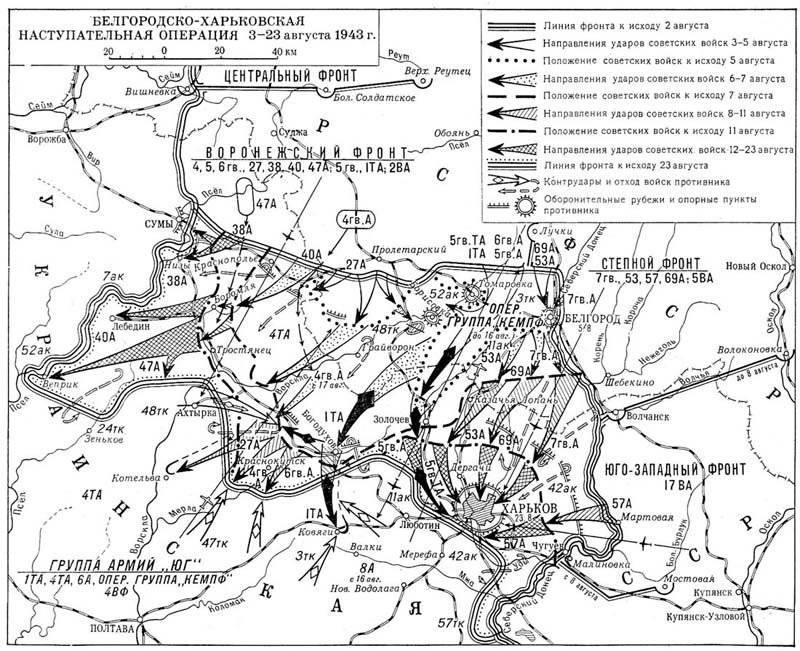
The beginning of the operation. Liberation of Belgorod
On August 2, the troops of the Voronezh and Steppe fronts took up initial positions for the offensive. For the headquarters of Army Group South, the Soviet offensive on this sector of the Eastern Front came as a surprise. The German command believed that the shock capabilities of the Soviet troops in this area were exhausted by the operation "Citadel". The Germans did not expect the Soviet troops to go on the offensive so soon.
The 3 of August from 5.00 to 5.05 continued a short artillery raid of all firing weapons of the fronts along the leading edge of the German defense. Before 5.35, a pause was taken, and then a full-fledged artillery preparation began, which lasted three hours. From 7.55 to 8.15, all the trunks again fired at the German leading edge, at the same time Soviet infantry, behind the fiery shaft, began to advance to the first German trench. By 8.15, the fire began to move deep into the German positions. Simultaneously with artillery preparation, Soviet aviation groups of 20-30 aircraft bombed and fired German positions with machine guns and cannons. Also, the aircraft ironed the location of the German artillery and reserve forces.
In 8.15, the Soviet infantry, with the support of tanks, broke into the enemy’s advanced trenches. In 13.00, when the infantry units of the 5 Guards Army penetrated into the main defensive line of the enemy approximately 2 km, 1-I tank and 5-I Guards tank armies were thrown into the battle. Tank units were to complete the breakthrough of the German defense and go to the operating room. Tanks were introduced into the breakthrough on a narrow 5-kilometer stretch, it was a huge cluster of armored vehicles.
On the very first day, the troops of the Voronezh Front broke through the German defense to the entire tactical depth. The arrows of the 5 and 6 of the Guard armies advanced 8-12 km. 1-I tank army, which was forced to participate in the breakthrough of the second line of defense of the Wehrmacht, advanced by 12 km and went to Tomarovka. The greatest success was achieved by tankers of the 5-th Guards Tank Army, advancing to a depth of 20-25 km. The operation was successful, but not as planned. Tankers advanced 20 km, and not 40 km as originally planned.
The offensive of the troops of the Steppe Front was developing quite successfully. The artillery of the front dealt a powerful blow to the German defensive positions. However, initially the German troops withstood the blow. Then considerable masses of aviation were thrown into battle. Stormtroopers and bombers struck hard at the German resistance centers. For the final breakthrough of the German positions in 15.00, the 1 th mechanized corps was brought into battle. During the first day of the fighting, units of the 53 Army and the right flank of the 69 Army advanced by 7-8 km.
Forcing the Seversky Donets soldiers 7-th Guards Army. Belgorod. July 1943
On the second day of the operation, the first setbacks began. The commander of the 6 tank corps, Getman, did not fulfill Katukov's order — without getting involved in the battle for the well-fortified Tomarovka, go around it and move on by inserting a barrier. Hetman in the morning began the battle for the German stronghold, the body lost 21 car. Only the personal intervention of Katukov forced the Hetman in the afternoon to continue the offensive, bypassing Tomarovka from the east. A motorized rifle brigade was left as a barrier. The 5 Guards Tank Corps, which was under operational control from Katukov, took part in the frontal attacks on Tomarovka. The hull lost 23 machines, not having achieved success. As a result, two tank corps lost time, only the 3 th mechanized corps of Krivoshein developed the offensive. The 31 tank corps was in reserve.
On the same day, the situation changed in the air. Luftwaffe activity in the Belgorod area has increased dramatically. German assault and bomber aircraft began to strike hard at the Soviet mechanized columns. Mobile units began to suffer heavy losses in people and equipment from the effects of enemy aircraft.
However, despite these interferences, the 1-I tank army of Katukov was able to pass around 20 km that day. German reserves were not in the path of the army Katukova. The 19-I tank division was redeployed to Tomarovka, and the 6-I tank division to the Belgorod region. 3 th mechanized corps was able to wedge between two German mobile connections, not engaging with them in battle. Soviet tanks continued to move south and southwest.
5-th Rotmistrov Guards Tank Army on the second day of the fighting was less fortunate. The guardsmen engaged in combat with the enemy's 6 Panzer Division, which occupied defensive positions prepared in advance in the area of Orlovka and Bessonovka. The terrain was difficult for tanks, with a large number of ravines, beams, rivers. German troops occupied the heights, preparing positions for tanks and anti-tank artillery. Approaches to them were mined. The 503 Battalion of Heavy Tanks (6 Tigers) also strengthened the German defense. Egorov's 18 tank corps rested against the German defenses and, having no opportunities for flank maneuver, stopped.
The 18 and 29 tank corps of the Army of Rotmistrov after a tense first day of the offensive had limited reserves of fuel and ammunition. We decided to bring the 5 Guards Mechanized Corps to the battle in the second echelon. However, the order was received Vatutin part of the army sent to the assault Belgorod, to help the troops of the Steppe Front. Mehkorpus had to be sent to the east. As a result, 4 August Rotmistrova army passed 10 km. The front was in a rage. Vatutin threatened Rotmistrov with a court for denuding the flank of Katukov’s army.
5 August began fighting for Belgorod. Konev sent a strong 53 Army bypassing the city from the west, and the 69 Army entered the city from the north. Part of the 7-th Guards Army forced the Seversky Donets, and went to the eastern outskirts. From the west, the offensive was supported by units of the 1 Mechanism Corps (as part of the 53 Army). The city was in a semi-circle and was attacked from three directions. The Wehrmacht offered stubborn resistance, clinging to each quarter and strong point. The German command wanted to keep this powerful center of resistance in their hands. However, the German troops could not stand such a massive strike. As a result, for the 18 watch, Belgorod was completely cleared of Germans. The steppe front solved the task of liberating Belgorod. The turnaround of the 5 Guards' Mechanized Corps from Rotmistrov’s army did not have a decisive impact on the collapse of the defense of the Belgorod Resistance Center. The steppe front coped well on its own.
On August 5, the 27 and 40 armies began their offensive. Even 4 of August, their advanced units conducted reconnaissance by force, testing the enemy defenses. In the morning of August 5, a powerful artillery strike was launched against the enemy’s positions, after which the armies launched an offensive. The defense of the enemy's 11 Panzer Division was broken through on the 26-kilometer sector. The Soviet troops advanced the day on 8-20 km. From the complete collapse of the German defensive orders in this direction saved the entry in the battle 7-th tank division.
After entering the 27 th and 40 th army into the battle, the Tomarov group of the enemy was under threat of complete encirclement. In Tomarovka, the formations of the 255, 332 and infantry and 19 armored divisions were defended. German troops held back the onslaught of the 6 Guards Army and the 6 Tank Corps, but now they were surrounded from both flanks. There was only one way to retreat - to Borisovka. On the night of August 6 the Wehrmacht left a fortified point. By the morning of August 6, Tomarovka was freed from the enemy.
Due to the delay of the 1-th Guards Tank Army, 5-I tank army of Katukov was forced to leave two brigades of the 3-th mechanized corps to cover its left flank. That reduced the impact capabilities of the advancing forces. The tank army experienced the greatest resistance on this day from the German air force, and not from the ground forces of the enemy. In general, the Katukov army showed good results on this day and passed about 30 km.
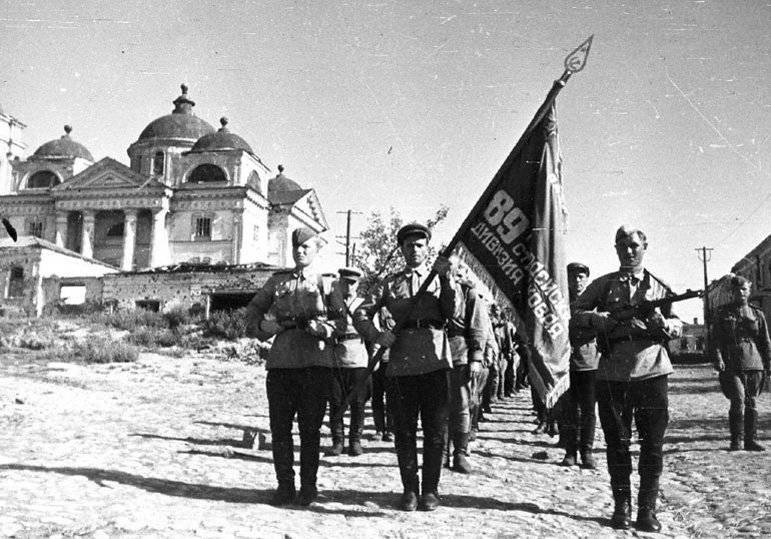
The warriors of the 89 Belgorod-Kharkiv Guards Rifle Division are passing along the streets of Belgorod.5 August 1943
To be continued ...
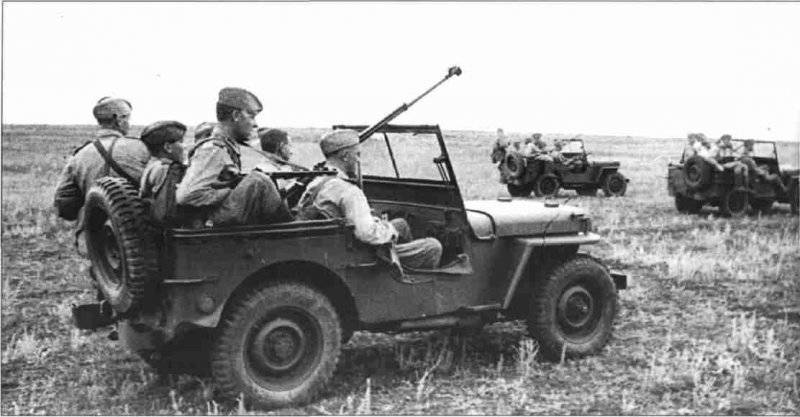
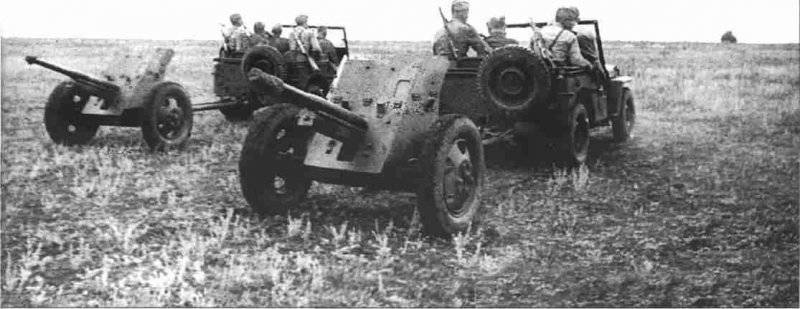
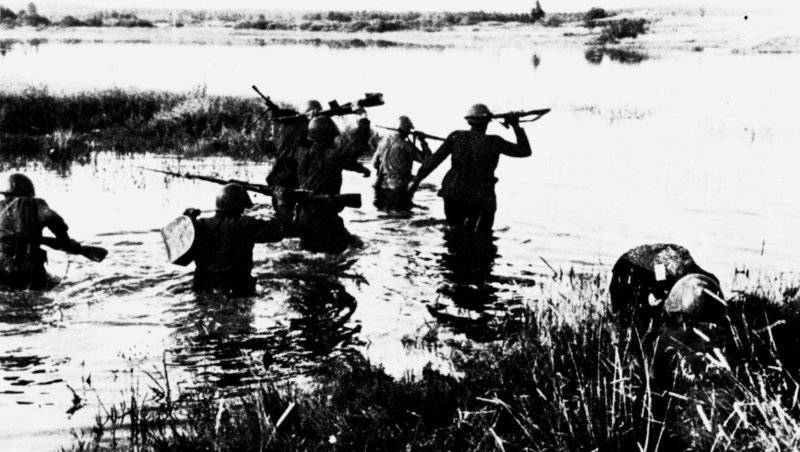
Information